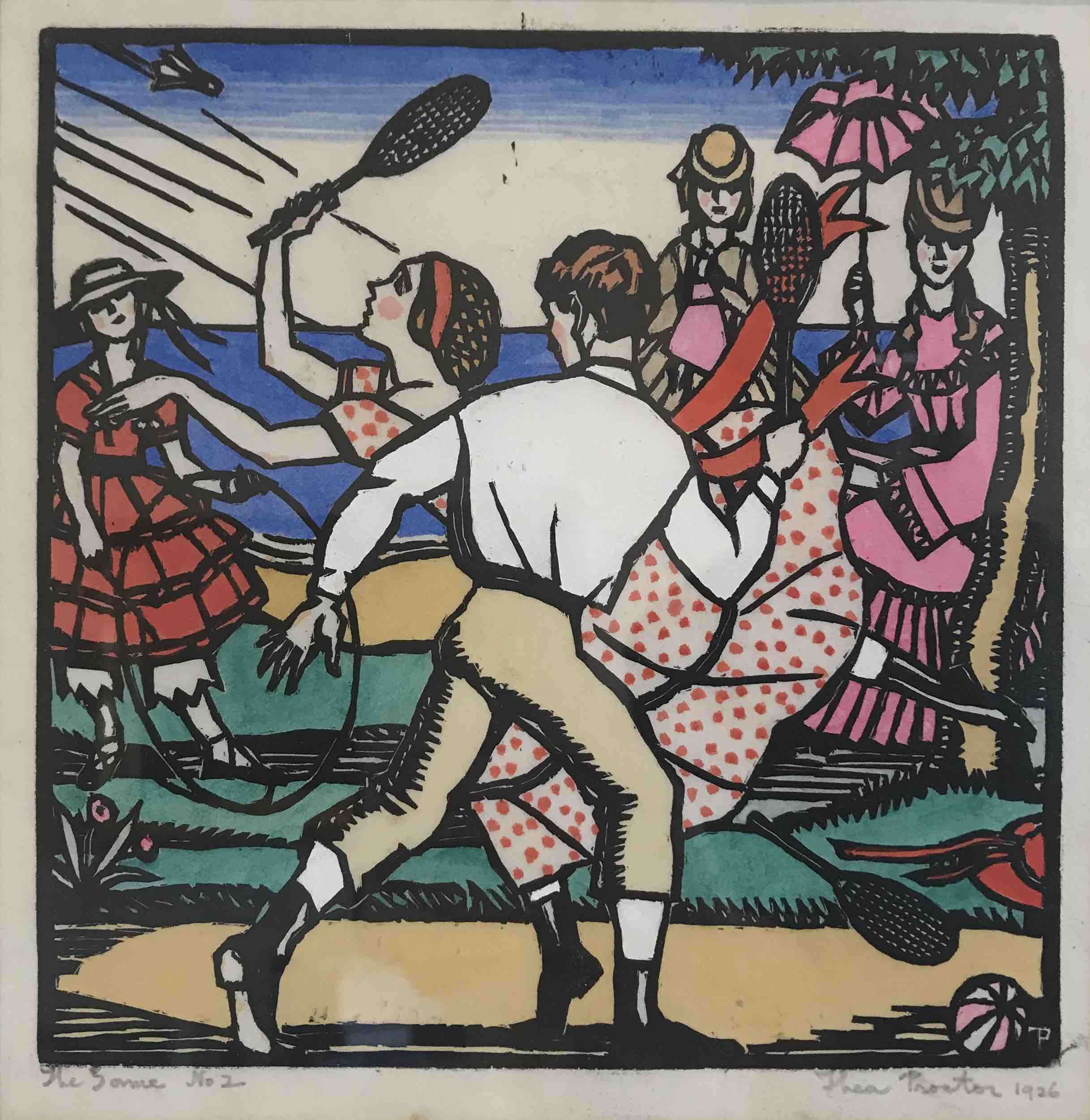The Game
Thea Proctor

Details
- Artist
- Thea Proctor
- Title
- The Game
- Year
- 1926
- Medium
- hand coloured woodcut on paper
- Details
initialled lower right with monogram
Editions of this woodcut are held in the collections of the National Gallery of Australia; Art Gallery of New South Wales and Benalla Art Gallery.
© Art Gallery of New South Wales
- Stock Number
- 219086
Sold This artwork has been sold. Please contact us for similar artworks.
Exhibited
Editions of this woodcut were exhibited at the following:
The New Galley, Melbourne, October 1927, no. 60
Argonaut Galleries, Adelaide, October 1929, no. 56
Literature
Art in Australia, September 1926, illus. p.72
Deutscher, Minchin, Butler, The Proctor The Prints, Resolution Press, Sydney, 1980, illus. p. 56
Humphries, Sayers, Engledow, The world of Thea Proctor, Craftsman House in association with the National Portrait Gallery, 2005, illus. p. 123
Further Information
Thea Proctor is one of Australia’s most important modern artists, her influence (especially in Sydney) spanning the decades from the 1920s to 1960s, through her own art, her teaching and her prominence as a tastemaker, particularly through The Home publication (1920 – 1942). Proctor worked in diverse media from silken fans to portrait pencil drawings to languid watercolours and linear lithographs and woodblocks. Art for Proctor was beautiful, decorative and ubiquitous, from fashion to design to elements of the home.
Her early studies with Julian Ashton (where she met George Lambert, a friendship maintained throughout their lives) awakened the importance of line. Proctor then worked, studied and exhibited in London 1903 – 1921, apart from a trip back to Australia in 1912-14 where she held her first solo exhibitions in Melbourne (1913) and Sydney (1914). In London she met and was influenced by Charles Conder and commenced her series of fan paintings. Other important influences included her exposure to the Ballet Russes and Roger Fry’s 1910-11 exhibition Manet and the Post-Impressionists. On return to Australia, during the 1920s and 30s, Proctor continued practicing and teaching, including lithography, and, for a relatively short period in her career, created woodblocks from 1925, with a strong emphasis on line, form, design and colour; premises central to her artistic oeuvre.
Although Proctor’s woodblocks are synonymous with the construct of modern art, where the “bolder decorative design and colours became bright flat areas bounded by black contours”, their subject harks back to visions of the past, “depicting an imagined Victorian pleasure world” with bustles and parasols; a romantic fantasy world Proctor experienced through costume parties in London and recreated in Art Society Balls in Sydney and of appeal with her attraction to vintage fashion.
The Game exhibits a well considered and balanced composition with a series of diagonals created by the two active fore-figures, flanked by well-attired onlookers partaking in the sea air, capturing the rise of the leisure class. The central figure’s broad back clad in a white shirt provides a judicious contrast to the bright use of colour Proctor has employed.
Return to Innovative Australian Women Exhibition Page
